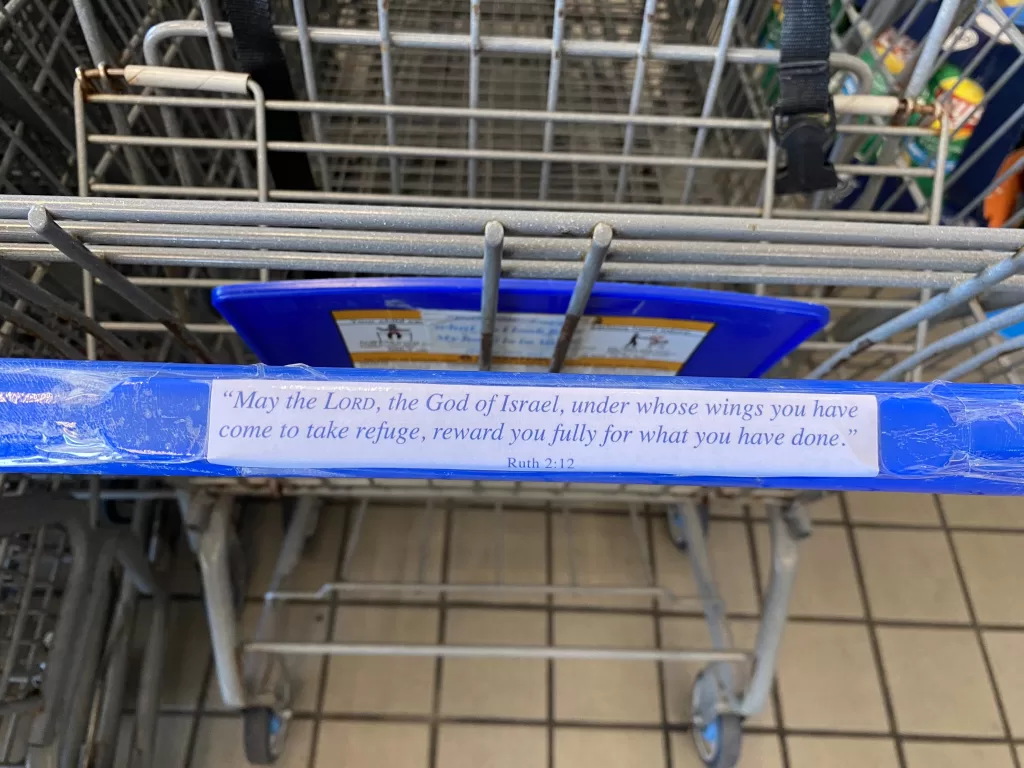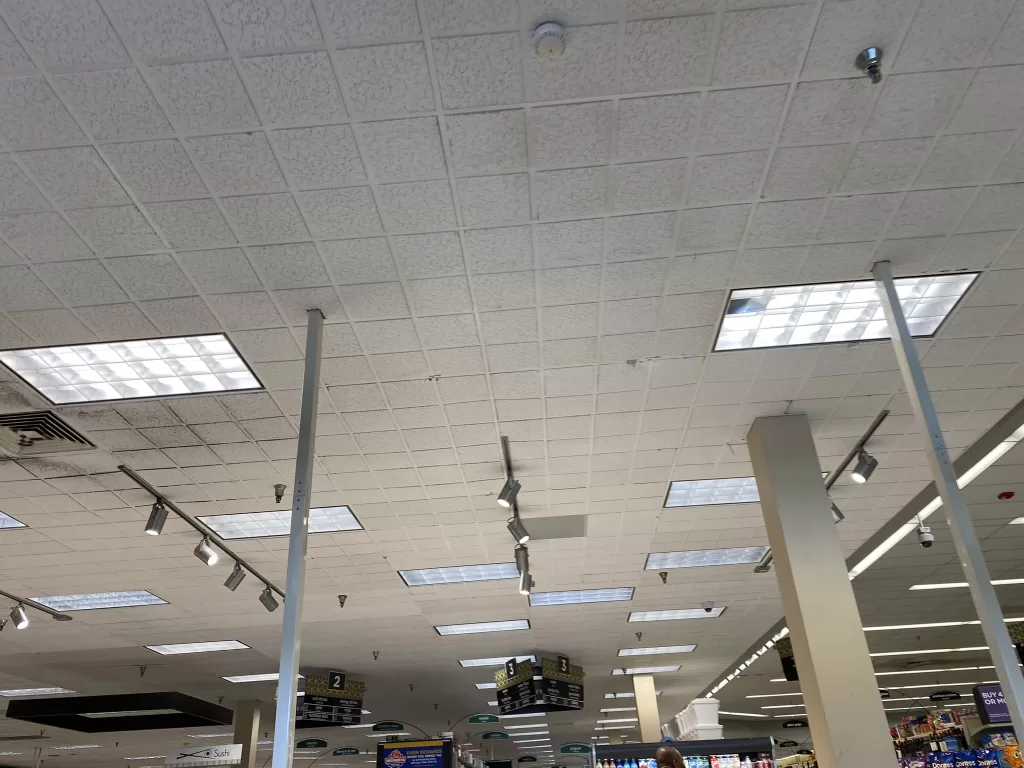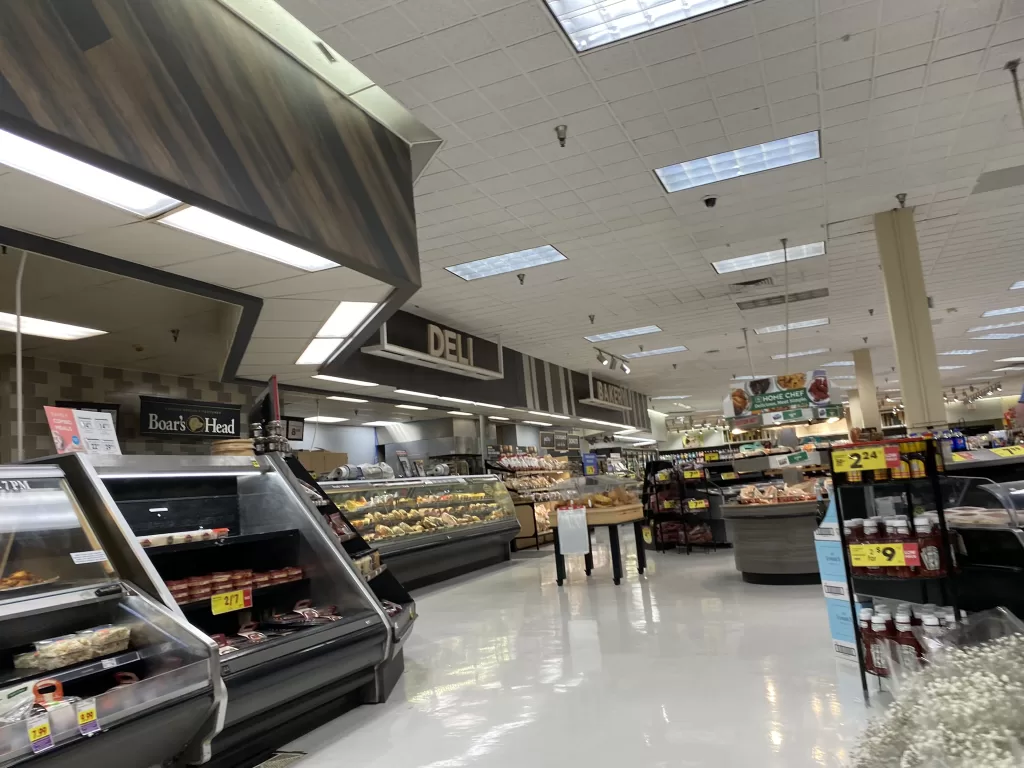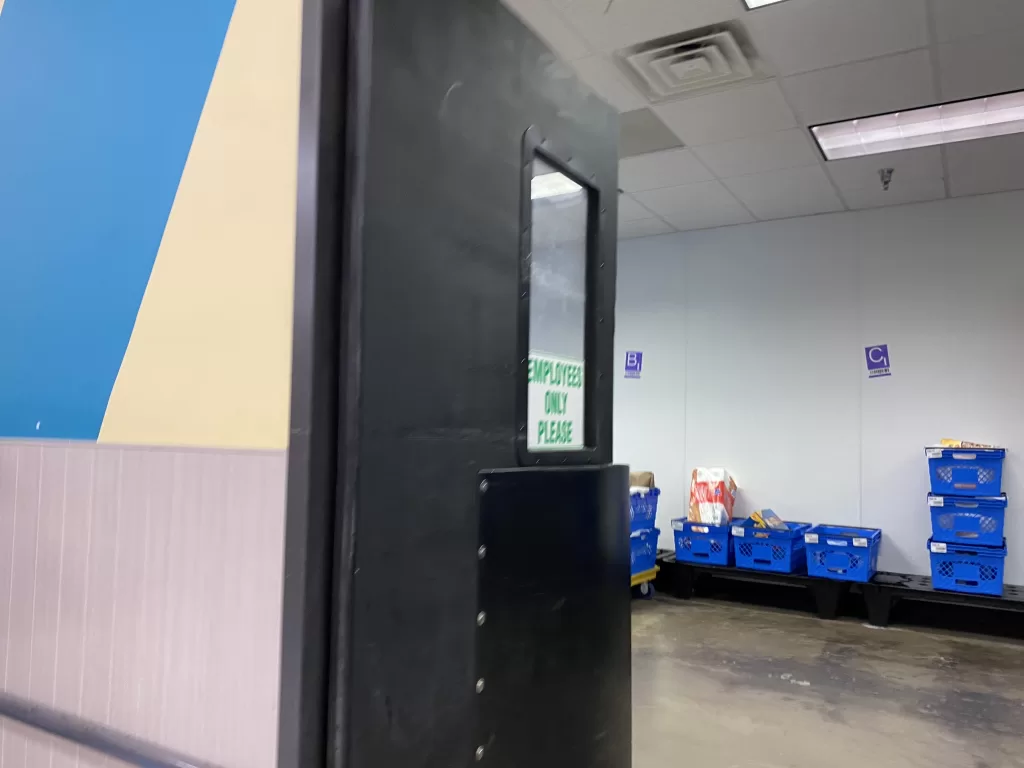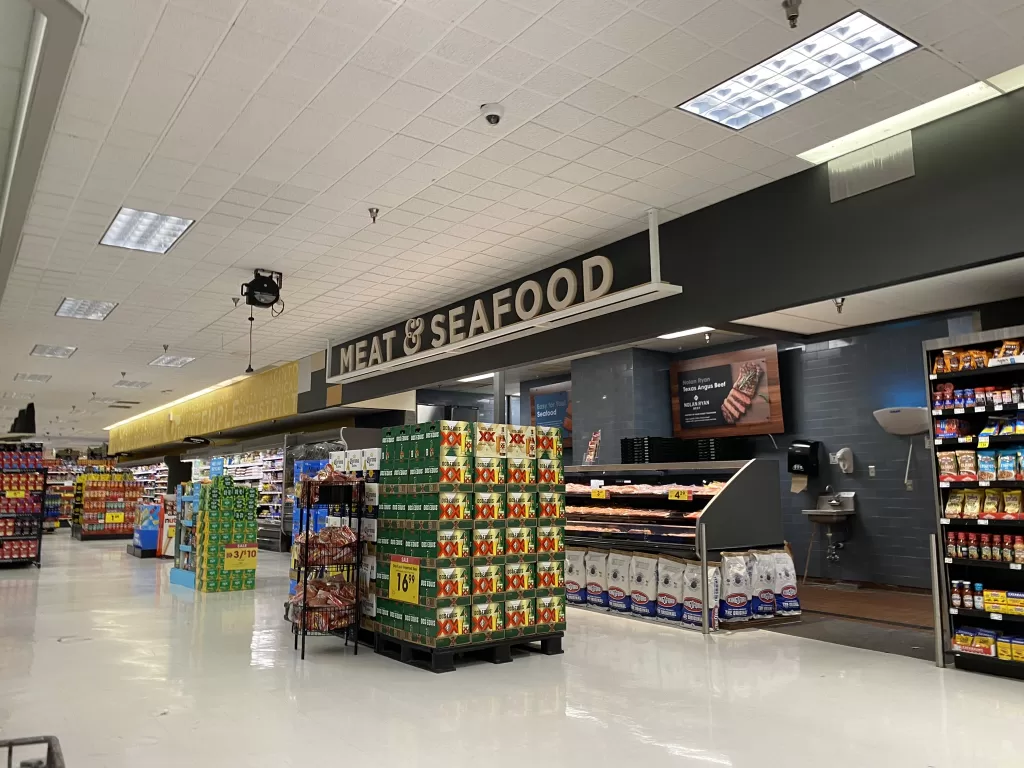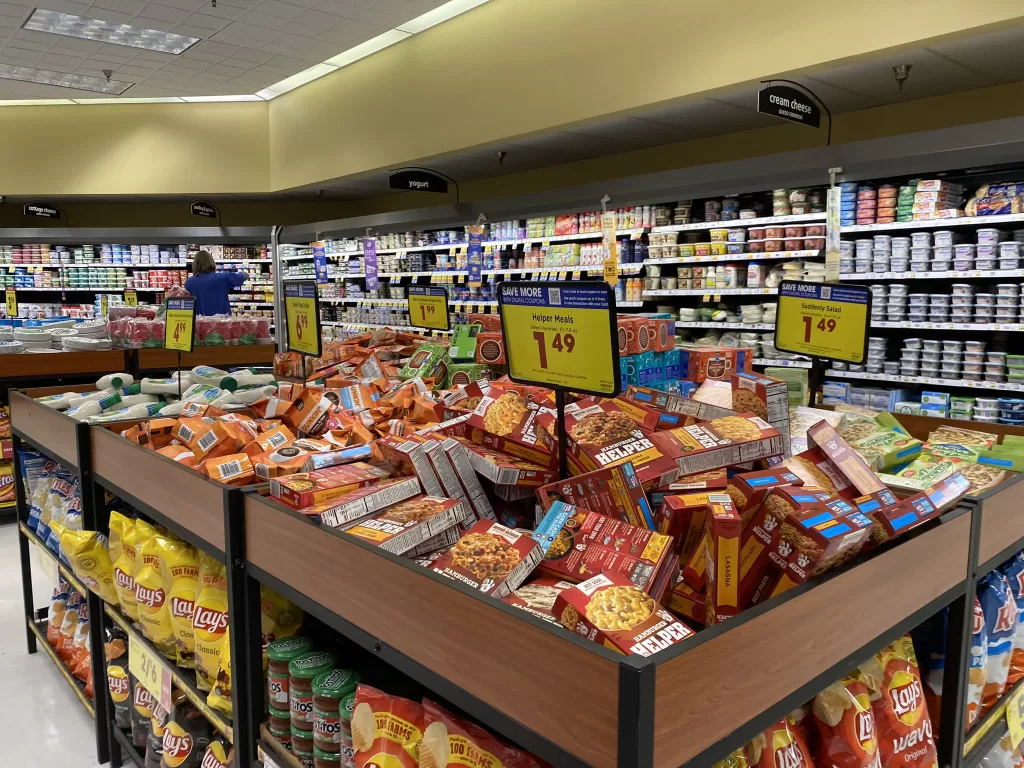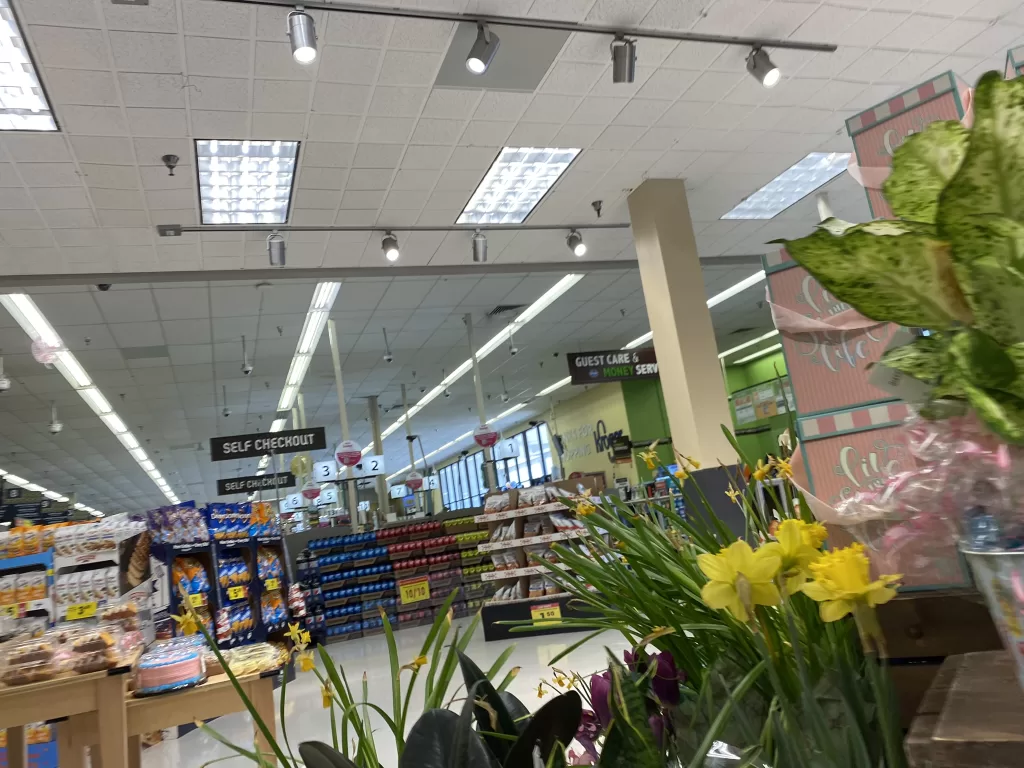Pearland’s Kroger Has an Unexpected History of Innovation – Houston Historic Retail

Editor’s Note: Today’s post is a guest submission from HHR’s good friend Anonymous in Houston with the photos taken by Mike
Now that we’re well into The Year of Kroger series here at Houston Historic Retail, there are two categories which describe most of the stores we’ve featured so far in The Year of Kroger. One category of stores are those which had new or rare features such as the Kroger Signature stores we featured in February and March’s The Year of Kroger posts. Another category are stores which featured some kind of expansion at some point over the years. January and April’s The Year of Kroger posts described stores under that category. This month’s The Year of Kroger post about the Kroger at 3245 FM 518 (E. Broadway), Pearland, TX 77581 will have aspects from both categories!
For those not from Houston, Pearland is a suburb in the southern part of the Houston metropolitan area. In the last few decades, the population of Pearland has boomed as it has been one of the hottest suburban areas in Houston. With that in mind, it is perhaps not a surprise that this month’s Kroger, like many of the Kroger stores we’ve discussed in earlier The Year of Kroger posts, is a replacement store for an older, smaller location. Indeed, Kroger originally had a location, which was across the street from the current Kroger, at 3260 E Broadway St, Pearland, TX 77581 in the Sherwood Village Center. This Kroger opened in 1967 as a 12,369 sq. ft. store. Interestingly enough, this store opened with the Kroger name out front instead of Henke & Pillot in what was an early use of the Kroger name on a store in the Houston market.
Although the name on the store in Pearland might have been innovative, the opening of the Sherwood Village Center Kroger only slightly predated Kroger’s move to larger Superstores with an expanded selection of general merchandise. With that, Kroger was eager to replace this store with a Superstore not long after it opened. Indeed, in 1980, that’s what Kroger did when the current Pearland Kroger, Kroger HP-264, opened across the street from the Sherwood Village Center with a Superstore II Greenhouse design in the new Pearland Plaza shopping center. The Superstore II Greenhouse design was described in May’s The Year of Kroger post about the Greenhouse Kroger at 4000 Polk. Of course, as we read back in May, the Superstore II design was soon to become obsolete itself as Kroger was moving towards combination stores with in-store pharmacies by the mid-1980s.
On the topic of pharmacies, Kroger HP-264 initially had a Walgreens pharmacy as a neighbor. In the 1990s, however, Walgreens moved to a freestanding location as an outparcel within the same shopping center. Like we saw with January’s The Year of Kroger post about the Veterans Memorial Kroger and in April’s The Year of Kroger post about the Texas City Kroger, Kroger decided to expand Kroger HP-264 in 1995 into a ~60,000 sq. ft. Signature store by expanding into a space previously used by a separate pharmacy store. This expansion, which took most of 1995 to complete, essentially doubled the size of the store. In many ways, this sounds like a repeat of the Texas City Kroger story. Indeed, the overall outcome was quite like the situation at the Texas City Kroger even if the layout of the two stores are not exactly the same since Kroger HP-264 does use a true power alley design.
Like at Texas City, Kroger planned to put most of the features found at new-build Signature stores into Kroger HP-264, but there was one complication. Kroger planned to put an in-store bank at Kroger HP-264 during the Signature store expansion in 1995, but plans for this fell through late in the process. Unsure what to do with this prime store space at the front of the store, Kroger decided to turn the planned bank space into an in-store daycare called Huggieland. Huggieland was described in February’s The Year of Kroger post about the Cypress Station Kroger, but Kroger HP-264 in Pearland was the first in-store daycare opened by Kroger nationally.
The name ‘Huggieland’ came from a sponsorship Kroger received from Kimberly-Clark, the maker of Huggies diapers, and Huggieland had a mascot named Hugslie The Bear. Eventually, after the Huggies sponsorship dried up, Kroger renamed some of their remaining daycare centers to Hugslie Land. To the best of our knowledge, a Kroger in The Woodlands still had an operational Hugslie Land as late as early 2020, but we are unsure and rather skeptical that it survived the Covid-19 pandemic. At other locations, Huggieland/Hugslie Land centers closed years before 2020. Kroger did operate child care centers at some of their Fred Meyer hypermarkets and QFC supermarkets in the Pacific Northwest, but again, we believe these were a Covid-19 casualty. Fred Meyer actually started their child care centers, called Playland, in 1988, but this predates Kroger’s acquisition of Fred Meyer and QFC in 1998.
Parents shopping with young children could drop their children off at Huggieland so the parents could shop in peace. Parents and their kids would receive matching bracelets and parents could keep an eye on their children via televisions mounted across the store. Child care professionals within the Huggieland room would also look after the children. Huggieland rooms had games and other activities for children. Huggieland was one well-publicized aspect of Kroger’s Signature stores which helped Kroger become the dominant Houston grocer in the late 1990s and 2000s and it all started as a backup plan for the in-store bank during the Kroger HP-264 renovation!
With the growth of Pearland, Kroger elected to supplement Kroger HP-264 with two additional stores in Pearland. Kroger opened a Signature store, Kroger HO-343, further west on FM 518 at 8323 Broadway St, Pearland, TX 77581 in the very early 2000s. This was joined by another Kroger Signature store, Kroger HO-308, which opened along 288 near Shadow Creek Ranch in the very late 2000s at 11003 Shadow Creek Pkwy, Pearland, TX 77584.
While the Shadow Creek Ranch Kroger competes with the nearby HEB Plus and Randall’s on the far western edge of Pearland, Kroger’s oldest remaining Pearland store, HP-264, still sees significant competition. Gone are the days of this Kroger competing against the Safeway/AppleTree/Randall’s on Pearland’s Main Street (Randall’s also briefly had a location along FM 518 near HP-264 in the early 2000s), but Kroger HP-264 does see some competition from the Food Town in a former Albertsons, which Mike recently featured in an HHR post, and from the HEB very close by on FM 518 & Pearland Parkway. In fact, Kroger HP-264 has long seen competition from HEB as HEB once had a Pantry Foods store in the same Sherwood Village Center where Kroger was previously before Kroger HP-264 opened!
The HEB near Kroger HP-264 is a big, modern HEB which has already seen renovations and is significant competition for Kroger. Like what we saw in June’s The Year of Kroger post about the Baytown Kroger Family Center and Kroger’s failed plans to replace that store, Kroger also had plans to replace the existing Kroger HP-264 with a brand new Kroger at Pearland Parkway and Barry Rose Road in the mid-to-late 2010s. Kroger and the developers went as far as putting in a parking lot on this site, but work stopped after that and never continued. To the best of our knowledge, the construction plans for the new Kroger HP-264 have been cancelled for reasons that are similar to what was described in the Baytown Kroger Family Center post.
Since Kroger will not be building a new HP-264, at least not for the foreseeable future, Kroger has updated the current HP-264 in an attempt to stay competitive. Kroger HP-264 was updated with Kroger’s popular Bountiful, also known as 2012, décor package in the early 2010s. While many Houston Krogers still carry Kroger’s Bountiful décor, Kroger updated HP-264 a few years ago to one of Kroger’s rarer and upscale current décor packages, Urban Mix. Retail Retell, a friend of HHR, described Urban Mix at the Mid-South Retail Blog back in 2020. As mentioned by Retail Retell, Urban Mix is based on the décor used at a short-lived attempt by Kroger to create an upscale organic supermarket called Main & Vine. Main & Vine was briefly tested in the Pacific Northwest in 2016, as described by another friend of HHR, Northwest Retail of the Northwest Retail Blog, but Main & Vine was closed in early 2018. Main & Vine might be dead & gone, but some aspects of Main & Vine live on at other Kroger locations via the Main & Vine-inspired Kroger Urban Mix décor package. If you ever wonder why Urban Mix uses so many ampersands, well, now you know it is because of Main & Vine!
In many ways, it is strange to see Urban Mix at Kroger HP-264. One would expect to see Urban Mix used at an upscale Kroger built as a Signature store and not at a Kroger which once started out as a Greenhouse store, but Kroger HP-264 is a rather unexpected store! It is possible that Kroger decided to give this store a more premium décor package in order to please shoppers who were expecting the old Kroger HP-264 to be replaced with the new ‘ghost Kroger’ location that never happened. Even with this upscale décor, there are some aspects of Kroger HP-264 which do not look upscale here in 2023. As is obvious in the photos, this Kroger store will not be winning any awards for their level of maintenance. While the Kroger Millennium décor package era flooring looks okay, for the most part at least, the ‘signature’ Kroger Neon-era ceiling tiles here are looking rather rough from not being sufficiently cleaned over the years. In my opinion, it is great that this store has distinctive ceiling tiles and a proper floor, but it would have been even nicer if Kroger properly maintained these areas. That said, even the poor maintenance here still looks much better, in my opinion, than Krogers from a similar era where Kroger has pulled up the flooring in favor of tile-scarred polished concrete.
In conclusion, when Kroger shoppers across Texas think about going Krogering in the 1990s and early 2000s, they’re likely to think of things like Huggieland which made Kroger a unique, somewhat upscale supermarket for those who had a Huggieland Kroger Signature store nearby. It is a bit strange to think that this innovative, upscale feature started at a Kroger which was initially a Greenhouse Kroger! That, combined with this store wearing Kroger’s Main & Vine-inspired Urban Mix décor package in current times and Kroger’s failed plans to replace this store, makes this Pearland Kroger quite a unique story! If anyone has any thoughts or memories of this Kroger, Huggieland, or of any other Kroger aspects, feel free to share your thoughts in the comment section below. We love to hear from our readers!





